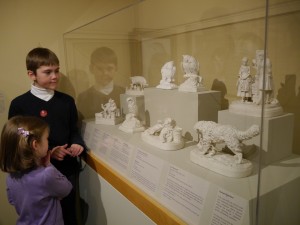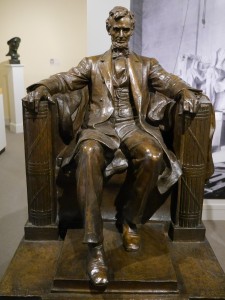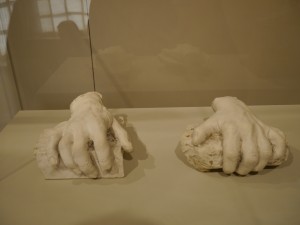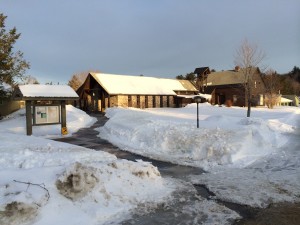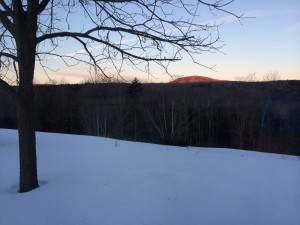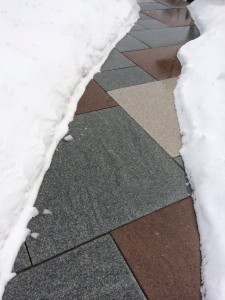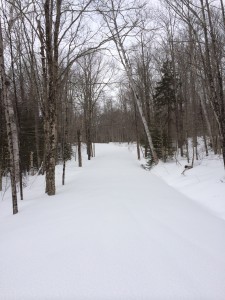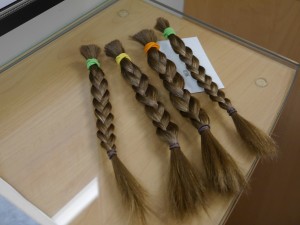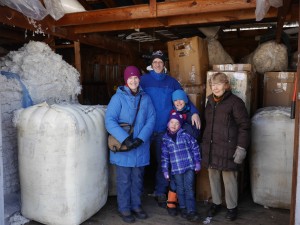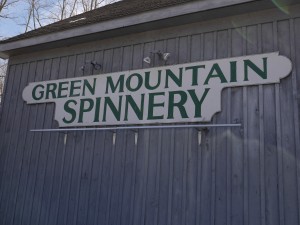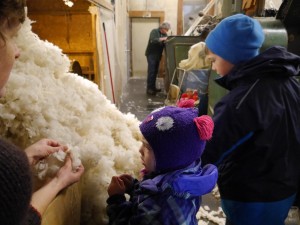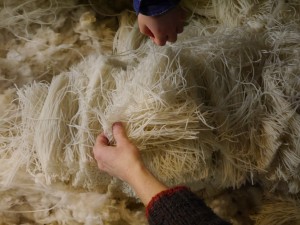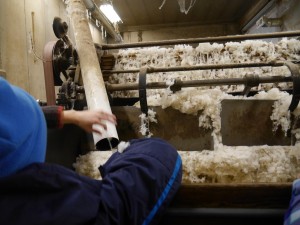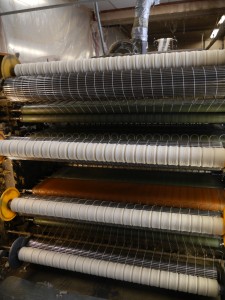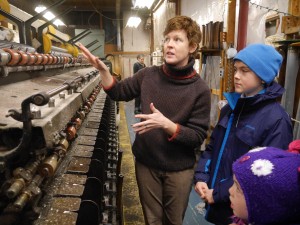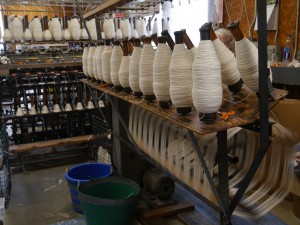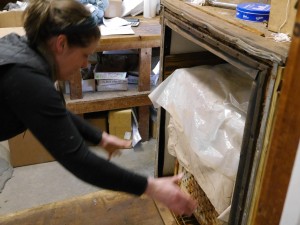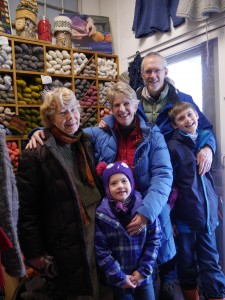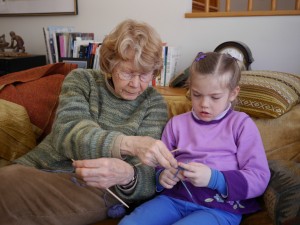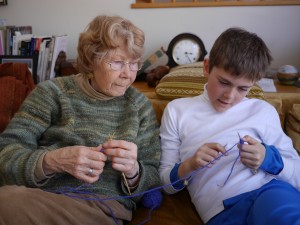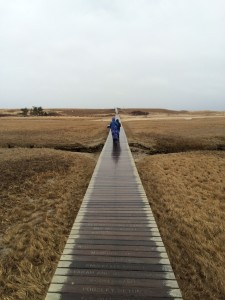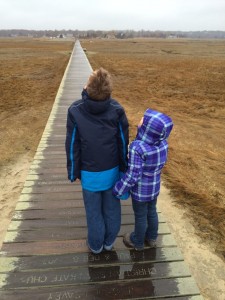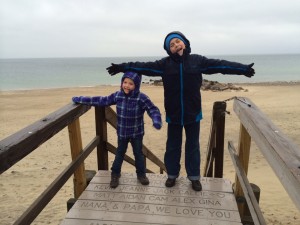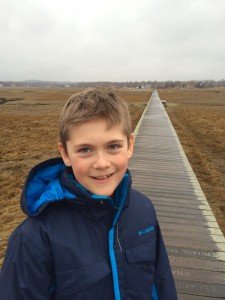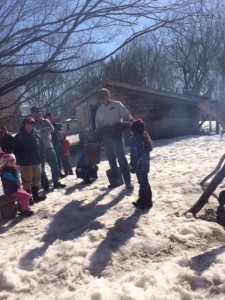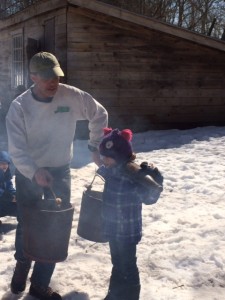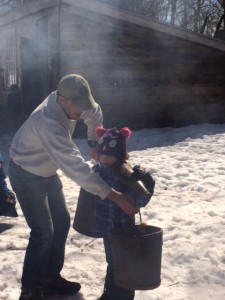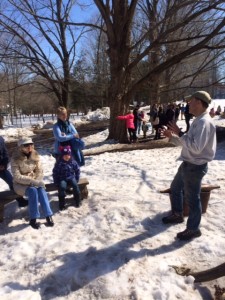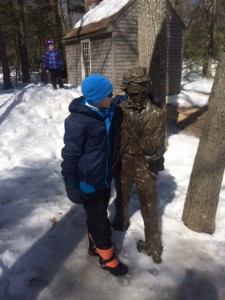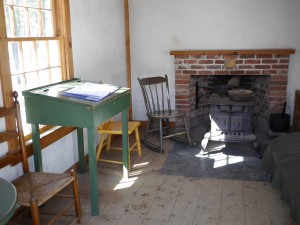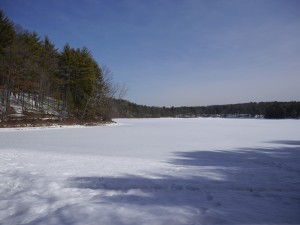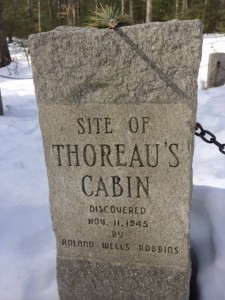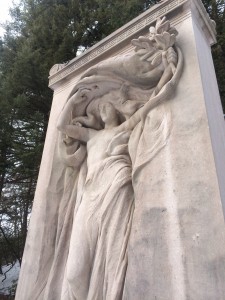Reunited after Erik’s retreat at Weston Priory, we continue connecting with extended family, visit people and sites in Vermont and around Boston, and read up and prepare for the next leg of our sabbatical odyssey.
Monthly Archives: March 2014
Sculpting in Concord
We went to the Concord Museum following worship today. The main exhibit was about the work of Daniel Chester French. We saw all the models he did, including the Lincoln Memorial and the Minuteman. He had a real interest in birds and we saw an owl, a dove, and other examples. He was really good at sculpting wings. We also saw a drawing he made when he was five years old of a bird, possibly a quail. He wrote “Danny French wrote this bird.”
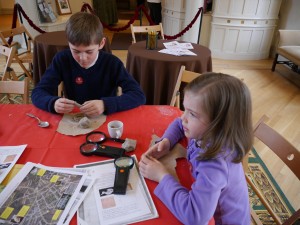 Naomi and I also got to work with a sculptor named Linda Sweeny. We worked with sculpting clay. She asked us to make something we really like, and so I first made a double decker fountain. We put water in the fountain to test it out. The fountain held the water! I also made a bowl with a knife, fork, and spoon, because I like food. I left the fountain there but brought the bowl and things home.
Naomi and I also got to work with a sculptor named Linda Sweeny. We worked with sculpting clay. She asked us to make something we really like, and so I first made a double decker fountain. We put water in the fountain to test it out. The fountain held the water! I also made a bowl with a knife, fork, and spoon, because I like food. I left the fountain there but brought the bowl and things home.
We learned that Daniel Chester French had access to a true impression of Lincoln’s hands. One of the hands was clenched and the other was not. French didn’t like the clenched hand and so for the Lincoln Memorial he made a model of his own hand not clenched. So on the Lincoln Memorial the right hand is Lincoln’s hand (from the impression), but the left hand is Daniel Chester French’s hand!
The Monks of Weston Priory
It originated in 1953 with the simple vision of one man, Abbot Leo, who, operating on a shoestring budget, found an abandoned farm on the edge of the Vermont’s Green Mountain National Forest for sale. And it became over the ensuing 60 years a thriving Benedictine monastic community: Weston Priory. I was privileged to experience the community’s rich, gospel-centered life and hospitality for seven days this March.
The cold temperatures, deep snow, a room looking west, and a small clutch of books, set the table for a wonderfully rewarding week. Add to that the warmly welcoming community of the 14 monks of Weston Priory, and it proved the perfect combination for inward reflection and soul-strengthening. Unlike the vast majority of other monastic communities in the USA, Weston has established itself was a community of equals, in which decisions are made by consensus and hierarchy is almost completely absent. Over the years, the monks have developed a rich musical style, with original songs accompanying each of the 4 or 5 liturgies throughout each day, beginning at 6am. (You can sample their recordings at their website.) I stayed with a few other men guests in Romero Guest House, located 1/2 mile down the road from the Priory, and the walks several times a day became a welcome discipline. I also had the opportunity to participate physically in community chores, such as snow shoveling and wood hauling, which made me feel even more a part of the community life. Shared meals in the refectory were a treat: simple fare, and nutritious, accompanied by the traditional Benedictine custom of book reading. In this case, the book in question, portions of which were read during midday and evening meals, was an incredible selection: UNBEARABLE WHOLENESS OF BEING–GOD, EVOLUTION, AND THE POWER OF LOVE, by Ilia Delio. Remarkably, the themes of the book tie in beautifully with themes from the sabbatical. It’s a creative and provocative read, which I highly recommend. Here’s one excerpt from chapter 7, Christian Love:
We humans are not transients, renting a home in the cosmos until we can move to a more permanent one. Human life is not extrinsic to cosmic life, a strange species in an otherwise natural world. We are the latest arrivals in an evolutionary universe; we emerge from the whole and are integral to it. Evolution becomes conscious in us so that our task is not to leave the world but to see it in its divine depth, overcoming the forces of alienation that threaten to depersonalize culture.
The biggest takeaway for me from my time at the Priory, and there are many, is the sense of a compassionate community, deeply connected to and loved by the local folk, which is living out its vocation in simple but profound ways. My experience has given me much to ponder, and much to be thankful for.
Hair today, gone tomorrow!
March 17-23
This week, Erik goes on a weeklong solo retreat at Weston Priory in Weston, Vermont, while Chris and kids continue their journeys of connection and discovery.
Green Mountain Spinery, Putney, Vermont
A Blustery Day at Cape Cod
Maple Sugaring at Natick Community Farm
By Naomi
Today we visited the Natick Organic Farm in Natick, Massachusetts. This farm was first established way back in 1651 by Rev. John Eliot. We saw 11 piglets, born on Valentine’s Day, and goats, sheep, two cows, bunnies, and chickens. The name of our tour guide was Karen. She and her friends showed us how Maple sap was turned into Maple sugar and syrup, both in olden times by the Native peoples of the region, and by colonists, and also how it’s done today. Because of the cold winter, the sap wasn’t running very much yet, but today it warmed up enough that I got to put my finger out to taste a sample as it was coming out of the tree through the spile (that’s what the metal or wooden tube that they drive into the tree is called) and into the bucket. It tastes like water and you can barely even taste any of the sweetness.
The sap rests in the roots of the tree, and in the spring, when it warms up, it starts running up through the trunk and out through the branches to feed the growing buds. The sap is almost all water (97%) and only a tiny bit sugar (3%), so you have to boil it a long, long time before it becomes syrup and even longer to make maple sugar. It takes about 40 gallons of sap to make 1 gallon of syrup. And another thing is, a tree can’t start sharing its sap until it’s 40 years old (so the number 40 is the magic number for sap).
When we were learning about olden times, the guide needed a volunteer, and that was me! I stood up and he placed a yoke on my shoulders, and then put a bucket on each end of the yoke. A yoke is a long piece of carved wood that you put on your shoulders. Then he pushed down on the yoke and asked me to take some steps to see how heavy it would be to carry if the buckets were full. It was very, very heavy…but I would be able to do it.
Visit to Walden Pond
Today we traveled to Walden Pond (which is not really a pond but actually a small lake, but they call it that because in England they call lakes “ponds” and this is NEW England). Walden Pond was made famous by Henry David Thoreau, who lived there in a one room cabin for two years, two months and two days, starting on the 4th of July, 1845. During his stay he kept a journal writing down everything he witnessed and learned from nature.
When we first arrived, we saw a replica of his one room cabin. Inside was a wood stove, a bed low to the ground, and a writing desk with a guest journal in which I signed my name. Right by the cabin was a statue of Thoreau, which was exactly my height. Across the road was the Pond, and we started walking around it. The total distance was one and one-half miles, and it took us a little over two hours in the snow and ice. The Pond was frozen, and we saw an ice fisherman out on it, using an auger to make holes. As we walked the perimeter, we heard a low rumbling, gurgling sound like when you turn over a five gallon jug into a water dispenser and it goes “blub, glub, blub.” It was like the lake was talking to us.
About 2/3rds of the way around, we found the original cabin site, which was discovered on November 11, 1945. There was also a quote from Thoreau, which I read to our family.
“I went to the woods because I wished to live deliberately, to front only the essential facts of life. And to see if I could not learn what it had to teach, and not, when I came to die, discover that I had not lived.”
After our hike, we stopped by the gift stop, and my Dad picked up a book for me, entitled: A Mind with Wings, The Story of Henry David Thoreau, by Gerald and Loretta Hausman. I can’t wait to finish reading it!
Mourning Victory
Our tour guide at Orchard House, the Alcott family home, was right. She’d told us how Louisa’s sister, May, an accomplished artist, had been approached by the mother of a local boy who, from a young age, was putting knife to potatoes to carve figures, and who seemed to possess a native talent for sculpting. Would May, she wondered, be willing to take the boy under her wing and teach him what he might be willing to learn? The answer was yes.
That boy, Daniel Chester French, became, by the first decades of the 20th century, one of America’s leading sculptors. The Minuteman statue we saw adjacent to the North Bridge in Concord was his, completed for the 100th anniversary of the April 19, 1775 skirmish between British Regulars and Colonial Militia and Minutemen that sparked the war for independence. And in 1922, he collaborated with architect Henry Bacon to create one of our nation’s best known works: the Lincoln Memorial.
Our guide had said we could see an exquisite example of French’s work at the Sleepy Hollow Cemetery in Concord, a memorial to three brothers lost in the Civil War. It was, she said, an extremely moving work, and perhaps the piece most beloved by French himself. And so we went.
Mourning Victory is the name French gave his angelic, female figure, resolute and half clothed, who appears to be walking out of the stone, a victory bouquet of laurel leaves thrust outward in her left hand, while above her head her right hand pushes upward the folds of a shroud, as if to say, “death may have its day, but the final victory belongs to life.”
Standing in the snow in front of her I was deeply moved, and as I began reading the memorial attribution incised in stone below her, I had to stop. Why the tears? Was it because this memorial was dedicated by the surviving brother, James Melvin, to the three brothers lost in the Civil War, and as one of six brothers myself, I could intuit what such a loss might mean? That was part of it, I think. Was it because James Melvin had commissioned the sculpture from his boyhood friend, Daniel Chester French? This, too, I found significant. But it was the work itself that spoke most eloquently to me. Even now as I write more tears, unbidden, come.
Mourning Victory. Resolute strength wrapped in vulnerability. French has caught her in midstride, as if she’s about to leave the monument—and death itself—behind forever and stride into the light of that Bright Day. Inscribed at her feet, these words:
In memory of three brothers born in Concord
who as private soldiers gave their lives
In the war to save the country
This memorial is placed here by their surviving brother
himself a private soldier in the same war
“I with uncovered head
salute the sacred dead
who went and who return not”

